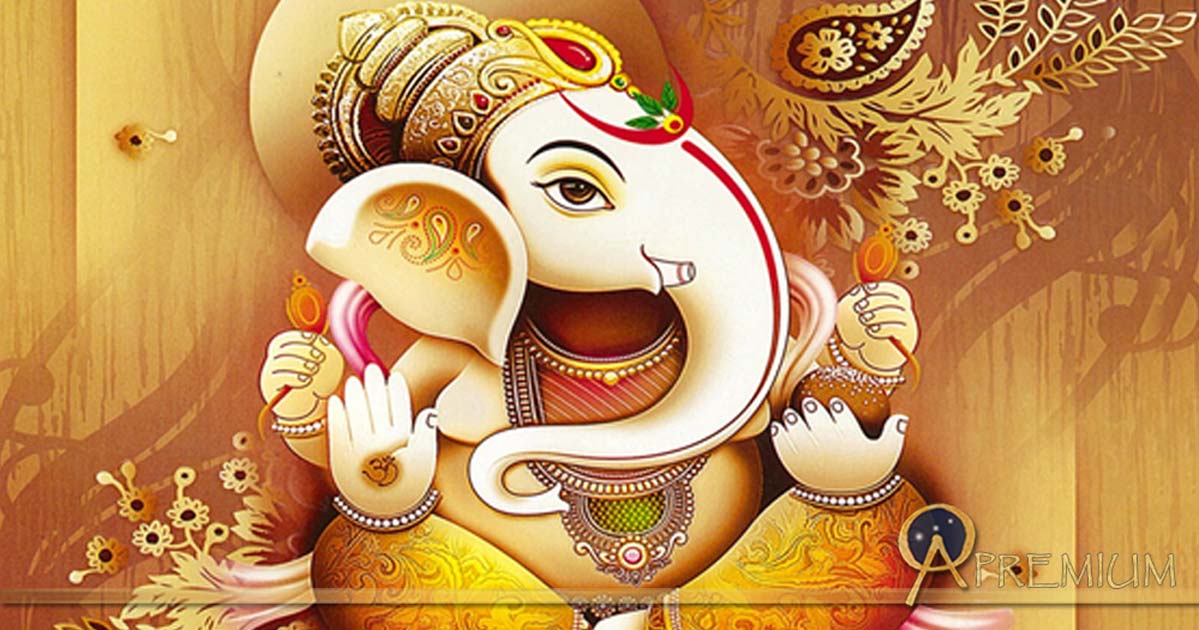Understanding Ganesha: Legendary Wise Hindu God who Removes Obstacles, Ensures Success
Ganesha is one of the most distinctive Hindu deities. His role is to remove obstacles and ensure success as well as creating obstructions for those whose ambition has become destructive. He is also the patron of travelers, students, commerce and new endeavors. Traditionally, all sessions of bhajan (devotional chanting) begin with an invocation of Ganesha with incantations such as Aum Shri Ganeshaya Namah (“hail the name of Ganesha”).
Although mentions of different qualities of Ganesha has existed for much longer, he appeared as a distinct deity in a recognizable form during the Gupta Period (c. 320-600 CE) of Indian history. He then went on to become one of the most prevalent Hindu deities in foreign lands through the development of new networks of exchange and money circulation throughout Asia in the 10th century CE. It was during this time that Ganesha became associated with traders who would pray that he would grant them success and remove obstacles in their path. This led to the spread of the worship of Ganesha into a wide variety of other cultures.

Statue of Ganesha (Sachinbatwal/CC BY-SA 4.0)
The Birth and Many Adventures of Ganesha
In the later Puranas, composed c. 600 CE, Ganesha was described as the son of Shiva and his consort Parvati. Ganesha was created by his mother using earth which she molded into the shape of a boy. As Shiva was away, Parvati set her new son as guard while she bathed. Not long after, Shiva unexpectedly returned home and, on finding the boy and outraged at his impudence in claiming he was Parvati’s son, Shiva called for his demons, the bhutaganas, who fought ferociously with Ganesha.
However, young Ganesha easily held his own against these adversaries until, when he was distracted, Shiva himself lopped off his head. Hearing the commotion, Parvati ran out and reproached Shiva for killing her son. The repentant Shiva ordered a new head to be found for the boy and, as the first animal available was an elephant, Ganesha gained an elephant head.

Shiva and Parvati giving a bath to Ganesha. Kangra miniature, 18th century (Public Domain)
A version of Ganesha’s story that explains the god’s association with intelligence and wisdom is his competition with Karthikeya (his brother, the good of war). In this legend, Shiva and Parvati showed the sons a divine fruit and told them that whoever would eat it would obtain the supreme knowledge and immortality. As both young gods wanted to eat the fruit, this led to an argument between them. To end the argument, Shiva told them that whoever would circle the world three times and come back first would get the fruit.
Kartikeya mounted his peacock and flew off without a moment hesitation. However, Ganesha sauntered over to his parents and started circling them three times with great devotion. When his parents asked him why he was not circling the globe, he answered that as his parents are the whole world, there was no need for him to go further to travel the whole world. Ganesha was then declared the winner.
One day, after eating a few too many modakas (sacrificial cakes), Ganesha decided to take a ride on his rat to aid his digestion.

Modakas, sacrificial cakes, made with coconut and jaggery (Nithyasrm/CC BY-SA 4.0)
However, a large snake surprised them and threw Ganesha off his mount. Ganesha landed on his full belly and it burst on hitting the ground. His belly opened and the cakes from his stomach rolled everywhere. However, this did not bother Ganesha who carefully gathered them in, stuffed them all back into his belly and wound the snake around his midriff to keep it closed. This is not only symbolic of Ganesha’s resourcefulness, but also his ability to overcome all obstacles as the snake, the cause of the accident in the first place, was also the one that provided the remedy for the damage it had caused.
This FREE PREVIEW is just a taste of the great benefits you can find at Ancient Origins Premium.
Join us there ( with easy, instant access ) and reap the rewards: NO MORE ADS, NO POPUPS, GET FREE eBOOKS, JOIN WEBINARS, EXPEDITIONS, WIN GIFT GIVEAWAYS & more!
- The Golem: Talmudic Legend of a Clay Beast Created to Protect the Jews
- Those Who Once Reigned: Experts Name Famous and Forgotten Ancient Gods
- Decapitation? No Problem. The Magic of Restoration: Ancient Myths and Practices of Plastic Surgery
Martini Fisher is a Mythographer and Author. Her books include “Time Maps: Evolution of Languages and Writings”
--
Top Image: Ganesha; detail (Patturaani/CC BY-SA 3.0)





















Comments
Seeing as there are many stories of elephant headed demons or gods turning into hybrid forms to complete certain tasks, I wonder if originally Ganesh was either a demon or the hybrid form if another god